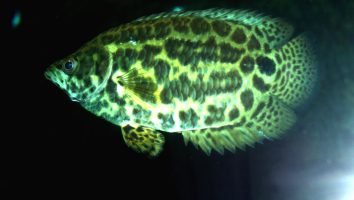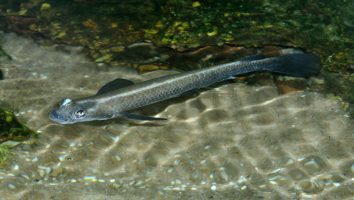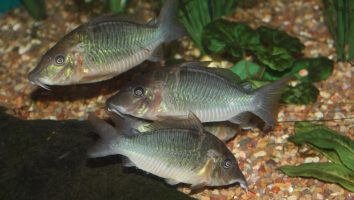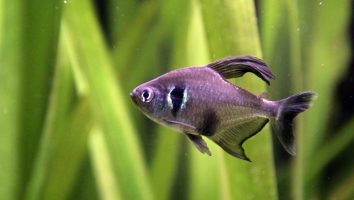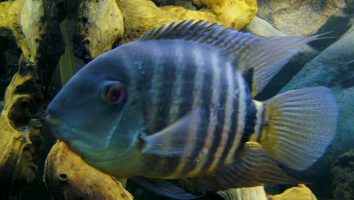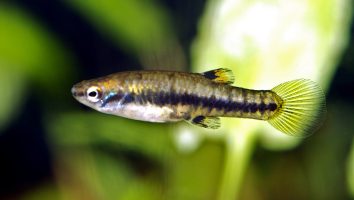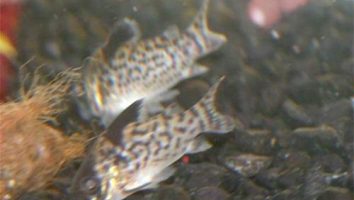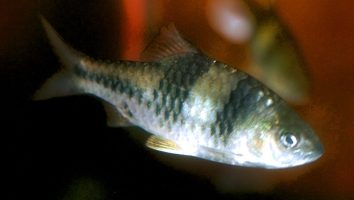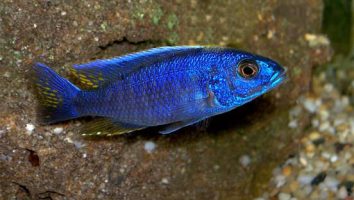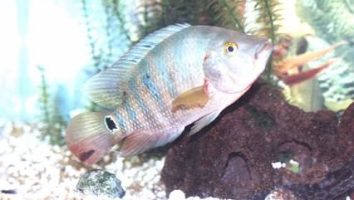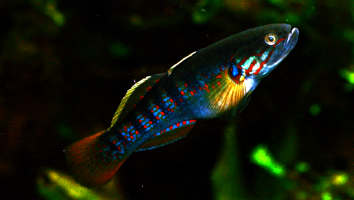The Emerald Catfish is a beautiful and peaceful freshwater fish that is perfect for the community aquarium.
This species is a favorite among aquarists because of their unique coloration and easy-going nature.
But as with all fish, there are some things you need to know before you bring them home. In this guide, we’ll teach you everything you need to know about Emerald Catfish care.
From diet and tank size, to tank mates and lifespan. It’s all here!
Table of contents
Species overview
Emerald Catfish (scientific name: Corydoras splendens) are a freshwater fish that’s found in the Orinoco River basin in South America.
They prefer areas with soft, sandy substrate and plenty of vegetation. This is something that’s not too difficult to replicate in the home aquarium, which is one of the reasons they’re such a popular choice for fishkeepers.
Emerald Catfish are social creatures that do best in groups. In the wild, they live in groups of 20 or more, so you’ll want to try to replicate this in their tank.
These fish are relatively peaceful and can be kept with a wide variety of tank mates. However, they can be shy, so you’ll want to make sure there are plenty of places for them to hide.
The Emerald Catfish is a popular choice for many fishkeepers because of its beautiful green coloration.
Appearance
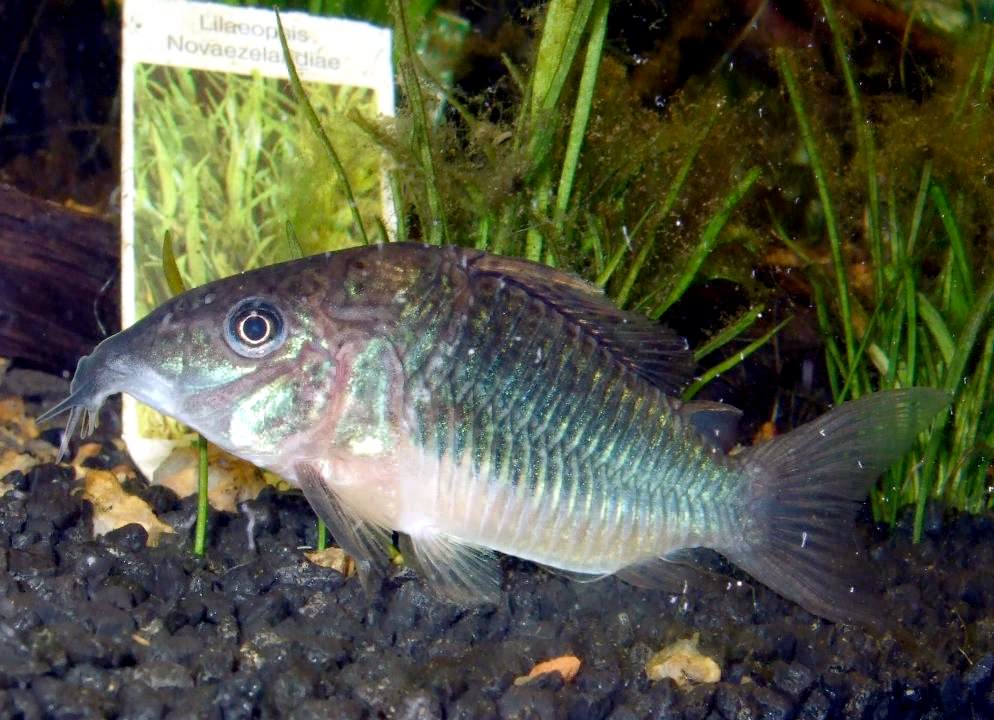
The Emerald Catfish is a freshwater fish that’s native to South America. As their name suggests, these fish have a beautiful emerald green color that really makes them stand out.
This color is solid all over their body with a slightly lighter shade on their belly. The color is darkest around their dorsal fin and anal fin. Both of these fins are large and extend the length of their bodies.
The caudal fin is forked and symmetrical with a dark band running through the center. The pectoral fins are also dark and located just behind the head.
Emerald Catfish have a long and thin body shape that tapers towards the tail. They have a small head with large eyes. Their mouth is located at the bottom of the head and has barbels that help them find food.
Lifespan
Emerald green catfish have a lifespan of about 10 years. However, there are a number of factors that can impact their life expectancy.
For starters, their lifespan can be shortened by poor water conditions. Emerald green catfish are very sensitive to changes in water quality.
They’re also quite sensitive to changes in temperature. So, if the water in their tank is too hot or too cold, it can shorten their lifespan.
Finally, their lifespan can be impacted by their diet. Emerald green catfish are scavengers in the wild, so they’re used to eating a lot of different things.
In captivity, they need a diet that’s varied and includes both meaty and vegetable-based foods. If they don’t get enough variety in their diet, it can shorten their lifespan.
Size
Emerald catfish only grow to be about 2.5 inches in length.
Tank
Tank Size
A 20 gallon tank is the recommended minimum for emerald catfish but, as with most fish, the bigger the tank the better.
These fish like to stay hidden away so a tank with lots of hiding spots is ideal. You can provide these hiding spots with live plants, driftwood, or cave-like structures.
Water Parameters
Emerald catfish are a bit more challenging to care for than some of the other species on this list. That’s not to say they’re difficult, but they do require a bit more attention when it comes to water parameters.
The biggest thing to remember is that emerald catfish are very sensitive to ammonia and nitrite. Even the smallest trace of either of these toxins can prove fatal.
You’ll need to take extra care to ensure the water is clean and well-filtered. Regular water changes are a must. You should also add an air stone or two to help keep the water oxygenated.
Here are a few key water parameters to keep in mind.
- Water temperature: 70 to 80 degrees Fahrenheit
- pH levels: 6.5 to 7.5
- Water hardness: 5 to 15 dGH
- Alkalinity Levels: 3-8 dKH
What To Put In Their Tank
Emerald catfish are a species of freshwater fish that come from South America.
They’re a relatively peaceful species that does well in community tanks.
When it comes to setting up the inside of their aquarium there are a few things you should keep in mind.
The first is that these fish like to hide. This means you should include plenty of hiding spots in their tank. Driftwood, caves, and plants are all great options.
The second is that they prefer a soft substrate. This is because they’re constantly sifting through the substrate looking for food. A softer substrate is easier on their barbels (which they use to feel around).
The third is that they need some plants in their tank. Emerald catfish are known to nibble on plants, but they prefer live plants over fake ones.
Some great plant choices for their tank include Hornwort, Java Fern, and Anubias.
Common Diseases
Emerald Catfish are a rather hearty and disease-resistant species. However, they can still fall ill if the water conditions in their tank are not up to par.
The most common disease that these fish experience is ich. This is a very contagious illness that is caused by a parasite. It’s one of the most common freshwater fish diseases and can be quite serious if it’s not dealt with quickly.
Ich will present itself as white spots on the body, fins, and gills of your fish. If you notice this, it’s important to take action immediately.
The best way to treat ich is to raise the temperature of the water in your tank. This will help to speed up the life cycle of the parasite and make it easier to remove with medication.
Of course, the best way to prevent your Emerald Catfish from getting sick is to simply maintain a clean and healthy tank. These fish are rather durable, but they’re not immune to poor water conditions.
By keeping the tank clean and the water quality high, you’ll significantly reduce the chance of your fish getting sick.
Behavior & Temperament
The Emerald Catfish is a peaceful creature that will do best in a community aquarium. They are relatively shy fish, so they will appreciate plenty of hiding places in the form of rocks, driftwood, and plants.
This species is nocturnal, so they will be the most active after the lights have gone out in the aquarium. During the day, they may hide away in their chosen hiding spots.
The Emerald Catfish is a peaceful creature that will do best in a community aquarium.
Tank Mates
Emerald Catfish are a peaceful fish that can get along with most tank mates. They’re not aggressive and tend to stick to themselves.
The main thing to watch out for is other bottom dwelling fish. Emerald Catfish are not territorial, but they may compete for food with other fish that occupy the same space in the water column.
Other than that, there are plenty of fish that make good tank mates for Emerald Catfish. Here are a few examples:
- Guppies
- Platies
- Mollies
- Swordtails
- Neon Tetras
- Dwarf Gouramis
- Harlequin Rasboras
- kuhli loaches
Breeding
Emerald catfish are a little more difficult to breed than some of the other species on this list. They’re not impossible, but it does require some extra effort and attention to detail.
The first step is to set up a breeding tank. It should hold at least 20 gallons of water and have a sponge filter. The water should be soft (around 5 dH) with a pH between 6.5 and 7.5.
Then, you need to add some plants. Emerald catfish like to lay their eggs on plants. Java moss is a good option.
After the tank is set up, add two males and three females. The males will be the ones with the longer dorsal fins.
Once the fish are in the tank, you need to start feeding them live foods. That will help to bring out their breeding colors.
When the fish are ready to breed, the females will lay their eggs on the plants. The males will then fertilize them.
Once the eggs are fertilized, the parents will lose interest and you can remove them from the breeding tank.
The eggs will hatch in about a week. When they do, you can start feeding the fry brine shrimp and other small live foods.
Conclusion
The Emerald Catfish is a great choice for beginners and experienced aquarists alike. They’re relatively easy to care for and make a beautiful addition to any freshwater tank.
If you’re looking for a community fish that is sure to stand out, the Emerald Catfish is a great option. Just be sure to do your research before making any decisions and you’ll be sure to find the perfect fish for your tank!

